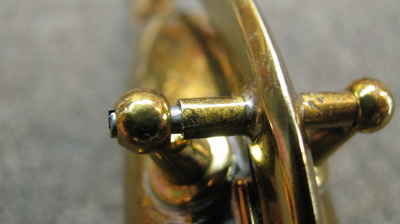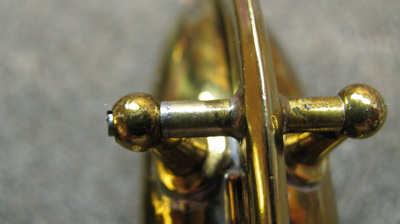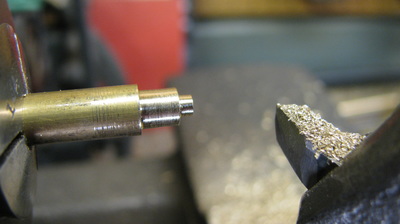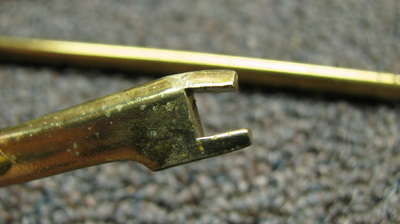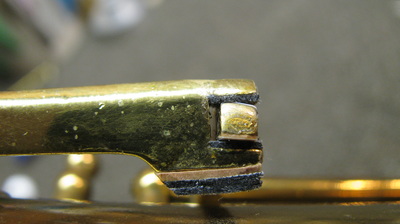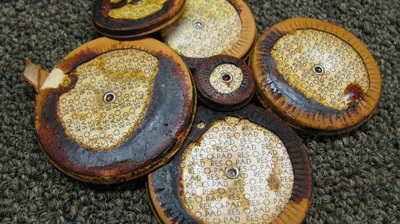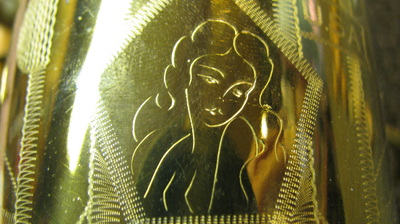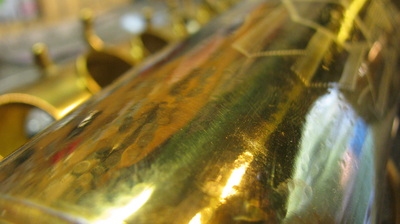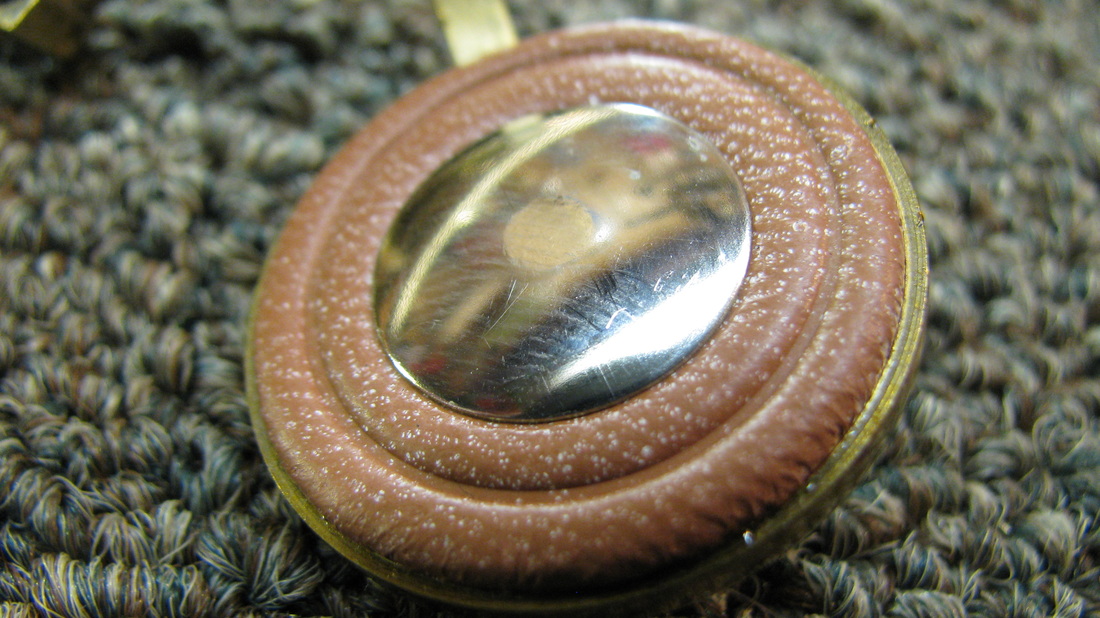The short answer is No. Here you see a 1941 Conn 10M owned by a client from Los Angeles. The Octave key is sitting between its posts. Look at the gap. It's not small by any means. It's huge. The key is wobbling like crazy on the hinge rod and will wander between the posts. This will give the octave pad multiple seats and ultimately end up in the key dragging against the guide. True, the key will err to one side over the other, but is that how you like you key work? More or less in one position when its not in some other?
"Sounds good to me. I prefer there to be over lapping seats in my pads. And come to think of it, I like all that clicking and clacking too, so keep those keys loose", said No One, Ever.
That is why hinge tube extensions are necessary. They are not overkill. Making this bushing, soldering it onto the hinge tube, and fitting the key so the faces of both the hinge tube and the posts are square, allows the key to stroke positively. Now there is absolutely no concentric play on the hinge rod, end play between the posts, or slop within the hinge rod and its post.
It is a repair that will last for years, and that is how I do things in my saxophone repair shop here in Seattle. It takes longer and costs more, but unlike the above mentioned alternatives, it eliminates frequent visits to the shop. And frequent visits to the shop are what is really unnecessary.
